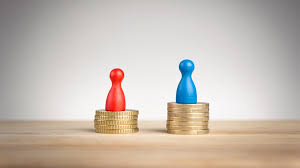European equal pay day
Published:
According to the European Commission, the average hourly pay of women in Europe is 16.3% lower than that of men, with the biggest gap in Estonia (26.9%) and the smallest one in Italy and Luxembourg (5.5%). That means that today, November 3, women effectively stop earning for the rest of the 2017 compared to their male colleagues. That is also the reason why it is today that Europe is celebrating Equal Pay Day to highlight that even though women in the EU perform in education equally well or even better than men, it is not reflected in the labour market.
To mark European Equal Pay Day, the European Commission published a legal study on The enforcement of the principle of equal pay for equal work or work of equal value, as well as EU factsheet and national factsheets on gender pay gap. These reports name gender segregation in education and in the labour market among major factors contributing to gender pay gap in Europe, together with the unpaid household work done predominately by women and longer periods off the labour market taken by women due to care responsibilities for children and elderly. In the education sector, these inequalities lead to the horizontal and vertical gender segregation in the teaching profession. The majority of education personnel working in the early childhood and primary education are women as these sectors are often associated with care-giving and are usually less-paid than jobs in other education sectors, whereas men are mainly employed in better-paid, higher-status positions (e.g. in tertiary education), as well as in leadership positions.
On Equal Pay Day, Susan Flocken, European Director, states: "To provide women with better career opportunities and reduce gender pay and pension gaps, we need better work-life balance regulations (including parental and care leave) and more equal representation of women in the decision-making positions”.